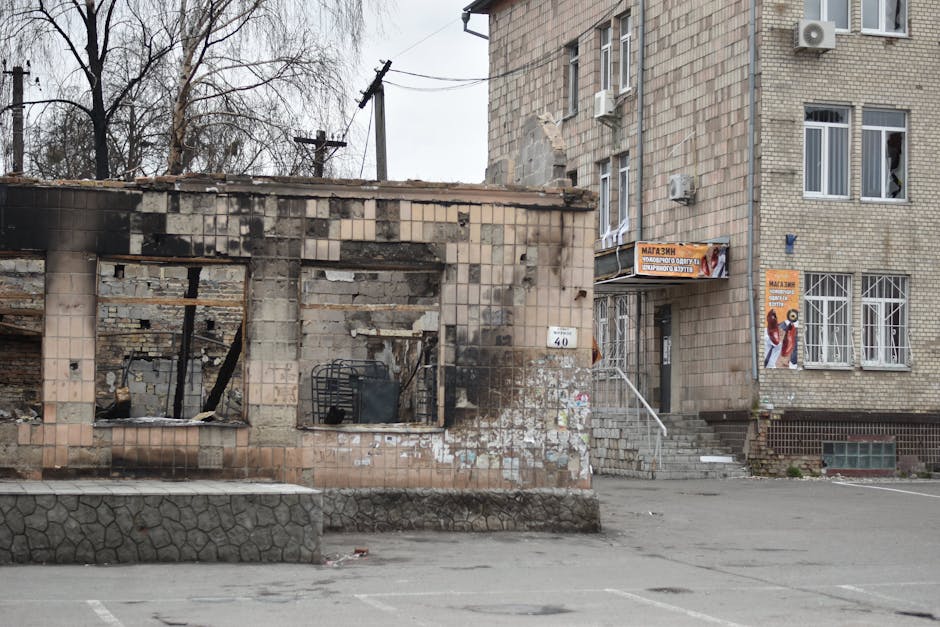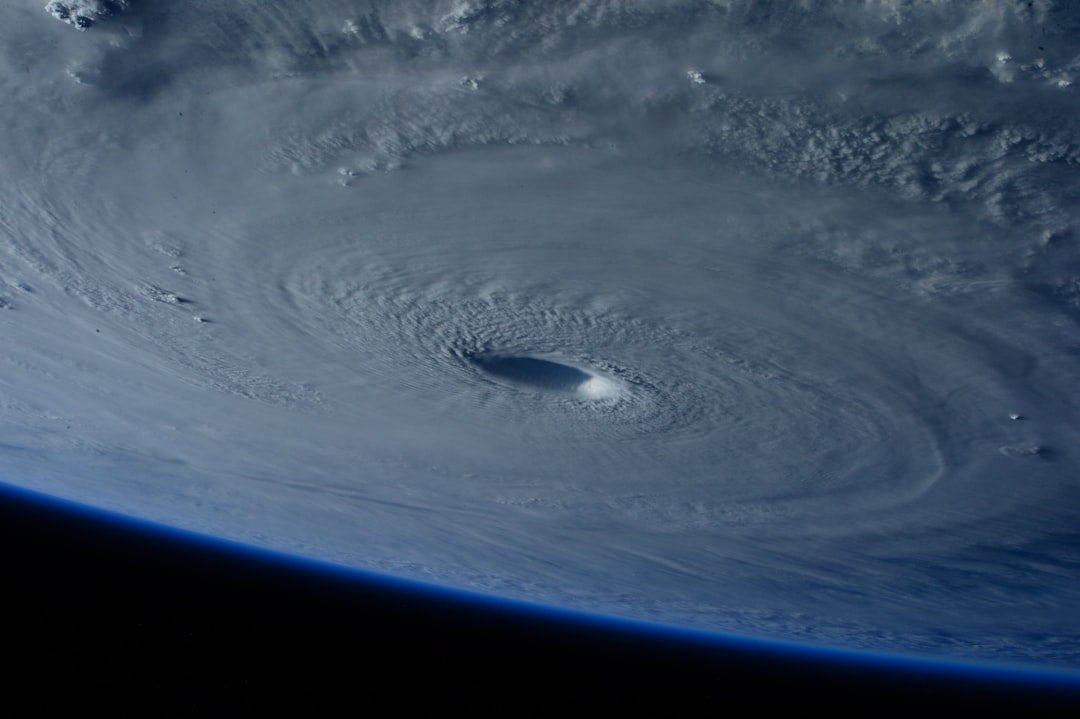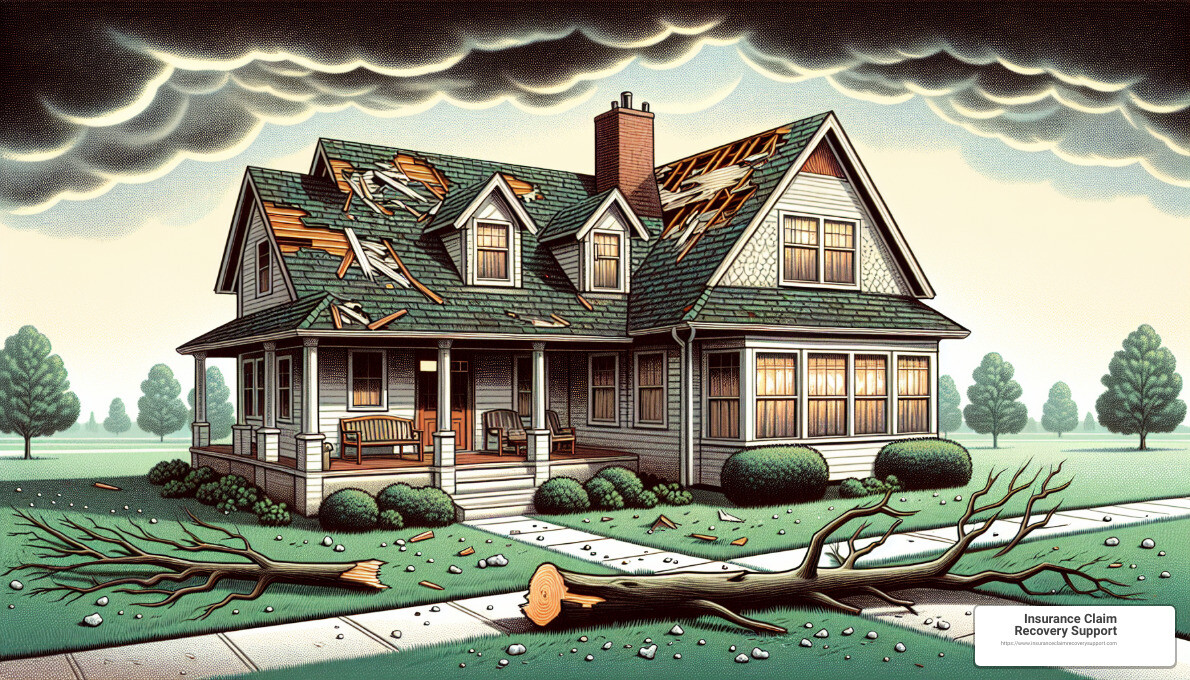Fire damage can be overwhelming, leaving property owners grappling with loss, confusion, and the daunting task of recovery. If you’re here, you’re likely seeking clarity on how to navigate the fire damage claim process successfully. Let’s get straight to the point with a quick glance at what you should do next:
- Document everything: Capture photos and videos of all damages.
- Secure your property: Use board up services to prevent further harm.
- Review your insurance policy: Know what’s covered before you file a claim.
- Act quickly: Fast action is critical to start the recovery process.
Fire damage does not only mean burnt structures; smoke, soot, and water damage from firefighting efforts also play a significant role in the overall impact. Immediate steps following a fire are crucial to ensure safety, prevent further damage, and begin the process of filing an insurance claim to restore your property. It might feel like a mountain to climb, but understanding these steps can give you a clear path forward.

Documenting the Damage
When a fire strikes your home, the aftermath can feel overwhelming. However, taking the right steps to document the damage can significantly influence the success of your fire damage claims. Here’s how to do it effectively:
Photos and Videos
Start by taking extensive photos and videos of all the damage. This should include:
- Wide shots of entire rooms for an overall view.
- Close-ups of specific damages to capture details.
- Different angles to ensure all aspects of the damage are documented.
These images and videos are your evidence. The more detailed and comprehensive they are, the better they support your claim.
Inventory List
Creating an inventory list is crucial. This list should detail everything affected by the fire, including:
-
Personal Property: List all personal items damaged or lost in the fire. Think clothing, electronics, furniture, and even small items like books and kitchen utensils.
-
Structural Damage: Note any damage to the structure of your home. This includes walls, floors, windows, and doors.
For each item on your list, include a description, the estimated value, and if possible, the date of purchase. This level of detail helps your insurance adjuster understand the extent of the loss.
Personal Property
For personal property, it’s not just about listing items. It’s about proving their existence and condition before the fire. If you have receipts, warranties, or even old photos showing the items in your home, gather them. These pieces of evidence can significantly strengthen your claim.
Structural Damage
Structural damage can sometimes be less obvious but equally important. Look for signs of damage not just in the obvious places like charred walls, but also in potential water damage from firefighting efforts, smoke damage beyond the fire’s immediate area, and soot damage that can affect air quality.
Why This Matters
Documenting the damage thoroughly and accurately serves several purposes:
- It provides clear evidence for your insurance claim.
- It helps ensure you’re fairly compensated for both visible and hidden damages.
- It can speed up the claims process by providing your adjuster with the information they need upfront.
The goal is not just to file a claim, but to receive a fair settlement that covers your losses. The effort you put into documenting the damage can make a significant difference in the outcome of your fire damage claims.
As you move forward, keep in mind that the process can be complex, and it’s okay to seek professional help. Companies like Insurance Claim Recovery Support specialize in guiding homeowners through the claims process, ensuring you’re not navigating this challenging time alone.
Securing Your Property
After a fire, your home might not just suffer from the initial damage but also from secondary issues like weather exposure, vandalism, or further structural weakening. It’s crucial to act fast to secure your property to prevent additional damage. This step is not just about protecting what remains but also about making sure your fire damage claims process goes as smoothly as possible.
Board Up Services
One of the first actions to take is to secure open spaces with board-up services. This means covering up all the windows, doors, and any other openings with plywood or similar materials. It’s a quick way to ensure your property is shielded from external elements and unauthorized entry.
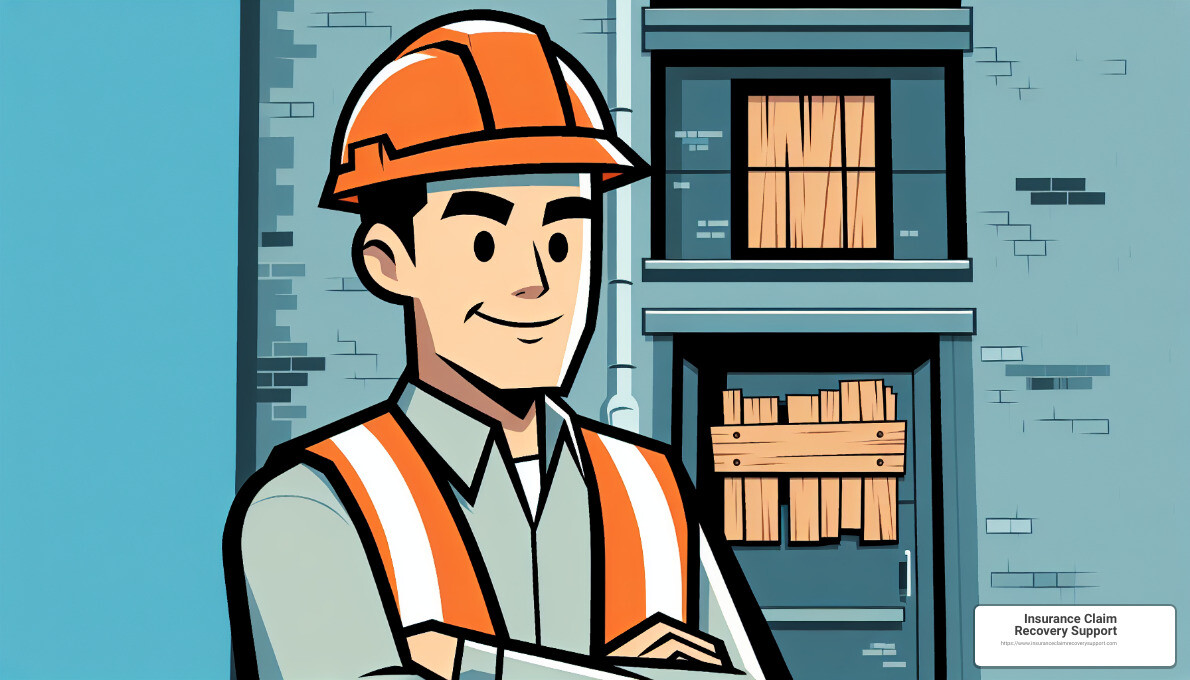
Roof Tarping
If the fire has compromised your roof, tarping is essential. A damaged roof can lead to water damage from rain, which can exacerbate the situation and lead to mold or further structural issues. Professionally applied roof tarps can provide a temporary barrier against the elements until repairs can be made.
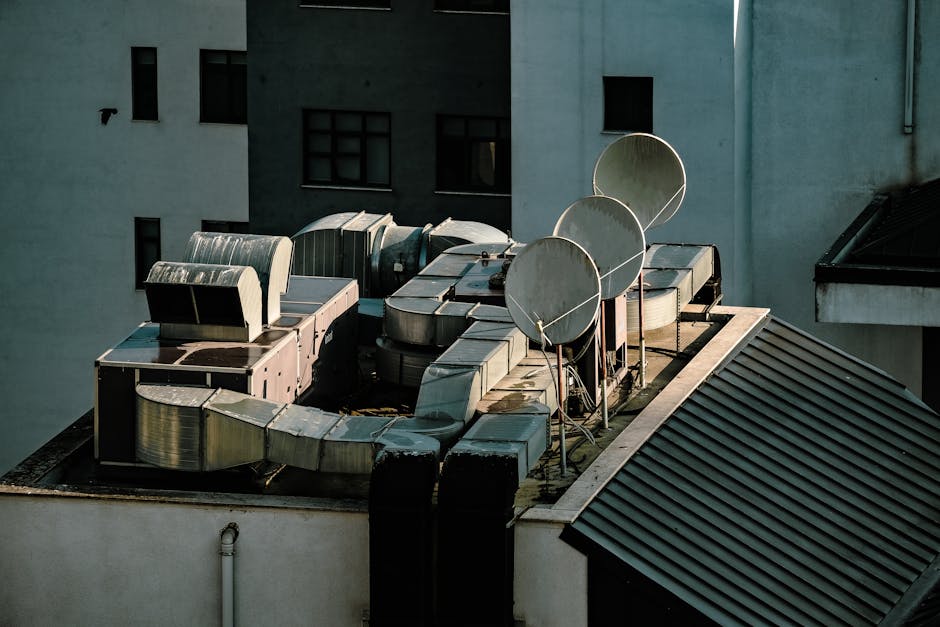
Fire Damage Restoration Professionals
Hiring fire damage restoration professionals is a critical step. These experts specialize in dealing with the aftermath of a fire, including smoke, soot, and water damage. They have the tools and knowledge to clean up and stabilize your property, preparing it for the repair process. The goal is to restore your property to its pre-fire condition, and professional help can make a significant difference.
Preventing Further Damage
While board-up and tarping services are immediate actions, preventing further damage also involves a few additional steps:
- Inspect for Structural Safety: Before entering your property, ensure it’s safe. Fire can weaken structures, making them hazardous.
- Limit Movement: Try to limit movement in the damaged area to prevent soot particles from being embedded into upholstery and carpets.
- Cover Clean Items: Use clean linens or plastic sheets to cover items that are not damaged to protect them from further harm.
Taking these steps not only secures your property but also helps in the fire damage claims process. Documenting these preventive measures provides evidence to your insurance company that you’ve taken appropriate actions to mitigate further loss, which can be beneficial in your claim.
As you secure your property, keep detailed records of all actions taken and expenses incurred. These records are vital when filing your fire damage claims. The goal is to ensure your property is safe and to prevent any additional damage while you navigate the claims process. Companies like Insurance Claim Recovery Support can offer guidance and support through this challenging time, ensuring that you’re not alone in your recovery journey.
In the next section, we’ll dive into understanding your insurance policy, a crucial step in ensuring you’re fully aware of your coverage and how it applies to your situation.
Understanding Your Insurance Policy
Getting to grips with your insurance policy isn’t just a good idea; it’s essential. Knowing what your policy covers, and just as importantly, what it doesn’t, can make a world of difference when filing fire damage claims. Let’s break down the key parts of your policy:
Coverage A: Dwelling
This part of your policy is all about the structure of your home. If a fire damages or destroys the building where you live, Coverage A steps in. It’s important to know the maximum amount your policy will pay out if your home needs to be rebuilt. This is your policy’s face amount, and it’s crucial to ensure it reflects the actual cost of rebuilding your home in today’s market.
Coverage B: Other Structures
Got a shed, detached garage, or a fence? Coverage B is for these guys. It covers structures on your property that aren’t your main living space. Just like with your dwelling coverage, there’s a limit to how much you can claim, so know what it is.
Coverage C: Personal Property
This is about your stuff — clothes, furniture, electronics, and more. If fire damages your belongings, Coverage C can help you replace them. Here’s a pro tip: keep an inventory of your personal property. It makes filing a claim much smoother.
Coverage D: Additional Living Expenses
If you can’t live in your home because of fire damage, Coverage D has your back. It pays for your temporary living costs, like hotel bills and extra food expenses. Knowing the limits and conditions of this coverage is key to managing your life during the recovery process.
Coverage E: Personal Liability
Accidents happen. If someone gets hurt on your property, or if you accidentally cause damage to someone else’s property, Coverage E steps in. It’s your financial shield against legal headaches.
Coverage F: Medical Expenses
This coverage is for minor injuries that happen on your property, not related to the fire itself but important nonetheless. If a guest gets hurt and needs medical attention, Coverage F can cover those costs, regardless of who’s at fault.
Understanding your insurance policy isn’t just about knowing what each coverage does. It’s about making sure you have the right protection in place before disaster strikes. Review your policy regularly and talk to your insurance provider if anything is unclear. In the event of a fire, knowing your coverage inside and out can make the claims process far less stressful.
Insurance Claim Recovery Support is here to help you navigate this complex process. We’ll guide you through each step, ensuring you understand your policy and how to leverage it for your recovery.
In the next section, we’ll tackle the ins and outs of filing the claim — another critical step in securing the funds you need to rebuild and recover.
Filing the Claim
After a fire, time can feel like it’s moving both too fast and too slow. Amid the chaos, it’s crucial to start the claim process swiftly to kickstart your recovery. Let’s dive into how to do this effectively.
Contact Insurance
First things first: Reach out to your insurance company as soon as you can. The quicker you get the ball rolling, the better. Most policies require immediate notification after an incident. This doesn’t just get your claim moving; it also helps prevent further damage, which your policy likely expects you to do.
Claims Adjuster
After you’ve made contact, your insurance will likely send out a claims adjuster. Think of them as the detective for your claim. They’ll inspect the damage, ask questions, and gather information to determine how much the insurance company should pay out. It’s your job to show them the full extent of the damage, so don’t hold back on sharing information.
Timely Claim Filing
Timing is everything. Filing your claim promptly ensures you’re following the rules of your policy. Waiting too long can lead to complications or even denials. Plus, the sooner you file, the sooner you can potentially receive your payout.
Documentation Submission
When filing your claim, you’ll need to provide a pile of paperwork. This includes photos and videos of the damage, a list of lost or damaged items, and any other documentation that supports your claim. Being organized can make this step a lot smoother. Make copies of everything you submit for your records.
Insurance Provider Communication
Keep the lines open. Throughout the claim process, stay in touch with your insurance provider. If they need additional information or documentation, provide it promptly. If you have questions, don’t hesitate to ask. Clear and frequent communication can help avoid misunderstandings and delays.
Filing a claim is a process. It involves a lot of steps and requires patience. But by contacting your insurance quickly, working closely with the claims adjuster, filing your claim in a timely manner, submitting all necessary documentation, and maintaining open communication with your provider, you’re setting yourself up for a smoother journey to recovery.
In the next section, we’ll explore how to navigate the claims process, from understanding the adjuster’s estimate to managing living expenses. Stay tuned for more guidance on making your way through the aftermath of a fire.
Navigating the Claims Process
Navigating the claims process for fire damage claims can feel like walking through a maze. But, with the right steps, you can find your way to a successful claim settlement. Let’s break down the essential steps you’ll need to take.
Adjuster’s Estimate
When you file a fire damage claim, your insurance company will send an adjuster to assess the damage. This person’s job is to inspect the site and estimate the cost of repairs. Remember: the adjuster works for the insurance company, not for you. Their estimate might not cover all your needs. You have the right to question and negotiate this estimate.
Restoration Estimate Comparison
After getting the adjuster’s estimate, it’s wise to call in a fire damage restoration professional. They can provide a second opinion on the damage and the cost to repair it. Often, these professionals catch things the adjuster might miss. Comparing these estimates can give you a stronger argument if you need to negotiate with your insurance company.
Dispute Resolution
Sometimes, you and your insurance company might not agree on the claim amount. If this happens, don’t panic. First, review your policy to understand your coverage fully. Then, communicate your concerns clearly and provide evidence to support your case. If you’re still stuck, consider hiring a public adjuster or seeking legal advice. They can help you navigate the dispute resolution process.
Hidden Damage
Fire damage isn’t always visible. Hidden damage, like structural issues or water damage from extinguishing the fire, can emerge later. If you discover hidden damage after the initial claim, you can file a supplemental claim. Keep your claim open for at least six months to allow time for these issues to surface.
Supplemental Claims
If new damage is discovered or if the cost of repairs ends up being higher than initially estimated, you’ll need to file a supplemental claim. This is common with fire damage claims due to the complex nature of fire damage. Documenting everything from the start makes this process smoother.
Living Expenses Tracking
If your home is uninhabitable, your insurance policy might cover living expenses, like hotel bills or meals. Keep all receipts and track these expenses meticulously. They add up quickly, and you’ll need this documentation to get reimbursed.
Navigating the fire damage claims process requires patience, attention to detail, and persistence. By understanding each step, from the adjuster’s estimate to tracking living expenses, you’re better equipped to advocate for your needs and maximize your claim settlement. You’re not alone in this process. Professional help, from restoration experts to legal advisors, can provide the support you need to navigate these challenging waters.
We’ll delve into how to handle denials and delays, ensuring you’re prepared for any bumps along the road to recovery.
Dealing with Denials and Delays
When you’re facing the aftermath of a fire, dealing with your insurance company might not go as smoothly as you hope. Sometimes, claims get denied or delayed. Let’s break down how to handle these situations and keep your claim on track.
Reasons for Denial
Your fire damage claim might be denied for a few reasons:
- Late Notification: Failing to report the damage promptly can lead to a denial.
- Incomplete Documentation: Not having enough evidence or documentation of the damage.
- Policy Exclusions: The cause of the fire might be something your policy doesn’t cover.
Understanding why your claim was denied is the first step to resolving the issue.
Re-filing Claims
If your claim was denied due to fixable issues, like incomplete documentation, you could re-file it. Here’s how:
- Review the Denial Letter: Understand the specific reasons your claim was denied.
- Gather More Information: Collect any additional documentation or evidence needed.
- Submit a Written Appeal: Clearly state why you’re re-filing and include all relevant information.
Re-filing isn’t guaranteed to reverse the decision, but it’s worth a shot if you believe your claim was unjustly denied.
Legal Assistance
Sometimes, you need a professional to step in. If you’re facing unjust denials or significant delays, it might be time to seek legal assistance. A lawyer specializing in insurance claims can help you understand your rights and the best course of action. They can also negotiate with the insurance company on your behalf, potentially leading to a more favorable outcome.
State Insurance Department
If all else fails, your state’s insurance department is there to help. They can provide guidance on your rights as a policyholder and might offer mediation services to resolve disputes between you and your insurance company. Filing a complaint with the state insurance department can also put additional pressure on your insurance company to act fairly.
Remember, dealing with denials and delays can be frustrating, but you have options. From re-filing your claim with additional documentation to seeking legal advice or involving the state insurance department, there are steps you can take to fight for a fair settlement. And always keep in mind, companies like Insurance Claim Recovery Support LLC are here to assist you through every step of the fire damage claims process, ensuring you have the support you need to navigate these challenges.
We’ll explore how to maximize your claim settlement, ensuring you get the compensation you deserve.
Maximizing Your Claim Settlement
After navigating the complexities of fire damage claims, the final hurdle is ensuring you receive a fair settlement. This stage is crucial, as it directly impacts your ability to rebuild and recover. Let’s break down the steps to maximize your claim settlement with a focus on professional inventory, hiring an independent adjuster, policyholder advocacy, and how Insurance Claim Recovery Support LLC can assist you.
Professional Inventory
Start with a professional inventory of all damaged property. This isn’t just making a list; it’s about documenting every item’s condition, age, and estimated value before and after the fire. This detailed inventory serves as a strong foundation for your claim. It’s evidence that can make a significant difference in the settlement you receive.
Independent Adjuster
Consider hiring an independent adjuster. Unlike the insurance company’s adjuster, an independent adjuster works for you, aiming to get you the maximum payout. They understand the ins and outs of insurance policies and will inspect your property thoroughly to ensure no damage is overlooked. Their expertise often leads to identifying damages that the insurance adjuster might miss, increasing your claim’s value.
Policyholder Advocacy
Policyholder advocacy is about having someone in your corner, fighting for your rights. Insurance Claim Recovery Support LLC plays this role, acting as your advocate throughout the claims process. They ensure your claim is treated fairly and push back against any undervaluation or denial of your rightful compensation. Their experience and knowledge of insurance laws protect you from being taken advantage of.
Insurance Claim Recovery Support LLC
Finally, partnering with Insurance Claim Recovery Support LLC can be a game-changer in maximizing your settlement. They offer a comprehensive approach, from conducting professional inventories and hiring independent adjusters to advocating on your behalf. Their goal is to streamline the claims process, minimize stress, and ensure you receive the compensation you deserve to rebuild your life after a fire.
Insurance Claim Recovery Support LLC’s team is skilled in negotiating with insurance companies, armed with the knowledge and experience to counter lowball offers. They understand the emotional and financial toll of fire damage and work tirelessly to ensure your claim is resolved swiftly and fairly.
In Summary, maximizing your fire damage claim settlement is about attention to detail, professional assistance, and strong advocacy. By taking these steps, you ensure that your claim is not just a number to the insurance company but a priority that gets the attention and settlement it deserves. With the right support, you can navigate this final hurdle successfully, setting the stage for rebuilding and moving forward.
Conclusion
After navigating the intricate journey of filing fire damage claims, it’s clear that the process can be overwhelming. From documenting the damage meticulously to understanding the nuances of your insurance policy and engaging in negotiations with adjusters, each step is crucial. However, the path to recovery doesn’t have to be traversed alone. This is where Insurance Claim Recovery Support LLC steps in, offering a beacon of hope and expert guidance.
At Insurance Claim Recovery Support LLC, we understand the emotional and financial toll a fire incident can take. That’s why we are dedicated to providing unparalleled support and advocacy for policyholders. Our team of professionals is adept at handling all aspects of fire damage claims, ensuring that you receive the maximum settlement you rightfully deserve. We believe in empowering our clients through education and strong advocacy, making the claims process as seamless as possible.
Why Choose Us?
– Expertise: Our deep understanding of fire damage claims and insurance policies ensures that no detail is overlooked.
– Advocacy: We stand by our clients at every step, offering strong advocacy against insurance companies to secure fair settlements.
– No Upfront Cost: Our services are offered on a contingency basis, meaning we only get paid when you do. This aligns our success with yours.
Rebuilding after a fire can be a daunting task, but with the right support, it becomes manageable. Insurance Claim Recovery Support LLC is committed to not just being a service provider but a partner in your recovery journey. Our track record speaks volumes, with hundreds of satisfied clients who have successfully navigated the claims process with our help.
You don’t have to face this alone. For more information on how we can assist with your fire damage claim, visit our public adjuster services page. Let us help you rebuild, recover, and restore your peace of mind.
In conclusion, dealing with fire damage claims requires patience, meticulous documentation, and, most importantly, strong advocacy. Insurance Claim Recovery Support LLC is here to provide the support and expertise needed to navigate this challenging time. Contact us today for a free case review and take the first step towards a successful settlement and a brighter future.

